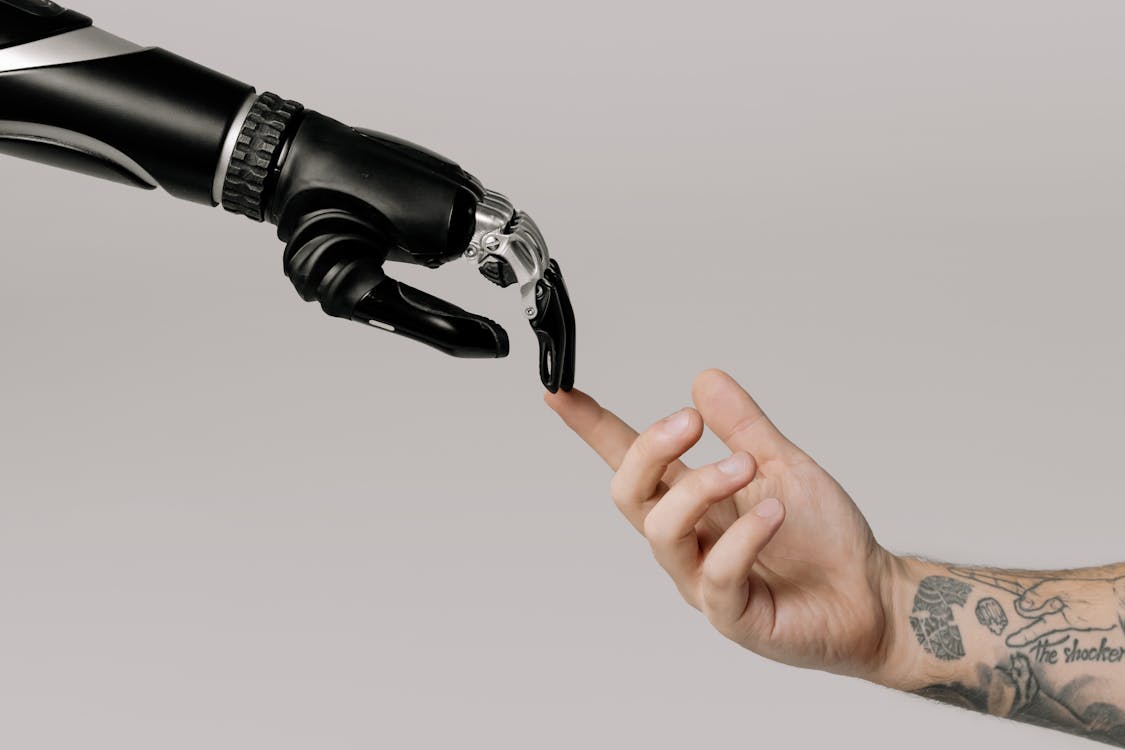 |
| pexel.com |
Artificial Intelligence (AI) has made significant strides in recent years, reshaping industries and daily life. This guide provides a detailed overview of some of the top AI technologies, their applications, and examples of their use.
Machine Learning (ML)
Explanation:
Machine Learning is a subset of AI that focuses on developing algorithms that allow computers to learn from and make predictions based on data. The primary goal is for machines to improve their performance on tasks over time without being explicitly programmed.
Examples:
Spam Detection: Email services like Gmail use ML algorithms to filter spam. By analyzing past emails, the system learns to identify and categorize spam messages.
Recommendation Systems: E-commerce sites like Amazon and streaming services like Netflix employ ML to analyze user behavior and preferences, providing personalized product or content recommendations.
Natural Language Processing (NLP)
Explanation:
NLP is a field of AI that focuses on the interaction between computers and humans through natural language. It enables machines to understand, interpret, and generate human language in a valuable way.
Examples:
Chatbots: Customer service bots on platforms like Zendesk use NLP to understand and respond to customer inquiries, providing 24/7 assistance and reducing response times.
Language Translation: Google Translate employs NLP to translate text between languages, allowing users to communicate across language barriers.
Computer Vision
Explanation:
Computer Vision is a branch of AI that enables computers to interpret and make decisions based on visual information from the world. It involves the use of algorithms to process and analyze images or videos.
Examples:
Facial Recognition: Technologies like those used by Facebook and various security systems employ facial recognition algorithms to identify and verify individuals based on their facial features.
Autonomous Vehicles: Companies such as Tesla utilize computer vision to allow self-driving cars to detect and navigate around obstacles, read road signs, and understand traffic conditions.
Robotics:
Explanation:
Robotics involves designing, constructing, operating, and using robots to perform tasks. AI is often integrated into robotics to enhance machine autonomy and decision-making.
Examples:
Manufacturing Bots: Companies like Amazon use robots in warehouses for picking, packing, and sorting products, significantly improving operational efficiency.
Surgical Robots: Systems like the da Vinci Surgical System assist surgeons by providing enhanced precision during minimally invasive procedures.
Generative AI
Explanation:
Generative AI refers to algorithms that can generate new content, such as text, images, music, or videos, based on training data.
Examples:
Text Generation: Models like OpenAI's GPT-3 can produce human-like text, which is used for writing articles, generating code, or creating conversational agents.
Art Generation: Tools like DALL-E and MidJourney create artwork based on textual descriptions, allowing users to visualize concepts in unique ways.
Deep Learning
Explanation:
Deep Learning is a subset of machine learning that utilizes neural networks with many layers (deep neural networks). It excels in processing large amounts of data and is particularly powerful in pattern recognition.
Examples:
Image Classification: Deep learning models like convolutional neural networks (CNNs) are used in applications like Google Photos to categorize and tag images based on their content.
Voice Recognition: Virtual assistants such as Siri and Google Assistant use deep learning to understand and respond to voice commands.
Anomaly Detection
Explanation:
Anomaly Detection focuses on identifying unusual patterns or outliers in data that do not conform to expected behavior. It is crucial in various fields to prevent fraud, monitor health, and improve security.
Examples:
Fraud Detection: Financial institutions use anomaly detection algorithms to analyze transaction patterns and flag suspicious activities in real time.
Network Security: Security systems apply anomaly detection methods to monitor network traffic and identify potential security breaches.
Reinforcement Learning (RL)
Explanation:
Reinforcement Learning involves training algorithms through a system of rewards and punishments. Agents learn to make a sequence of decisions by interacting with an environment.
Examples:
Game Playing: Algorithms like DeepMind's AlphaGo used RL to master the game of Go, defeating world champions by learning optimal strategies.
Robotics Control: Robotic systems employed in various applications learn to perform complex tasks (like walking or flying) by receiving feedback based on their actions.
Conclusion
AI technology is rapidly evolving, transforming how we work and live. Understanding these prominent areas of AI and their applications is crucial for leveraging their potential. As AI continues to advance, its impact on industries, society, and our daily routines will only grow deeper, making it a vital component of our future.
you may also like this:-A Comprehensive Guide to Making Money Online



.jpg)


nice information keep it up
ReplyDeleteNice work
ReplyDeleteCarry on
ReplyDeletevery informative post
ReplyDeleteThank you!